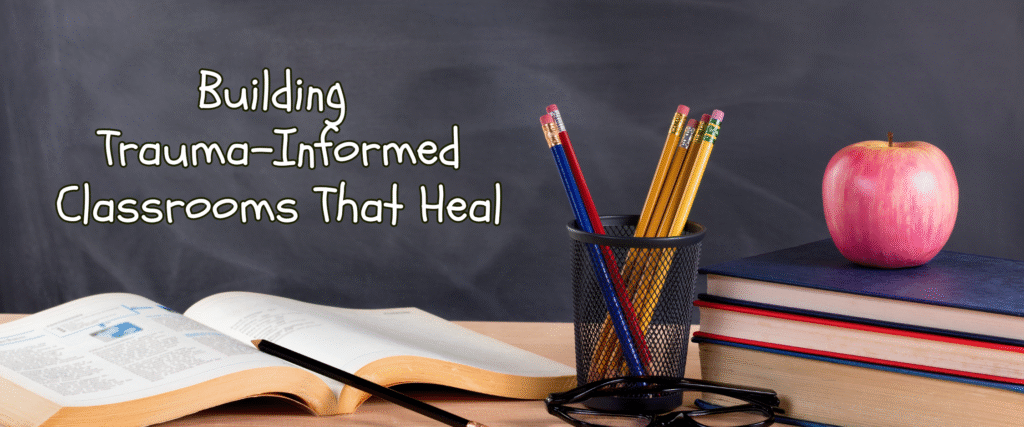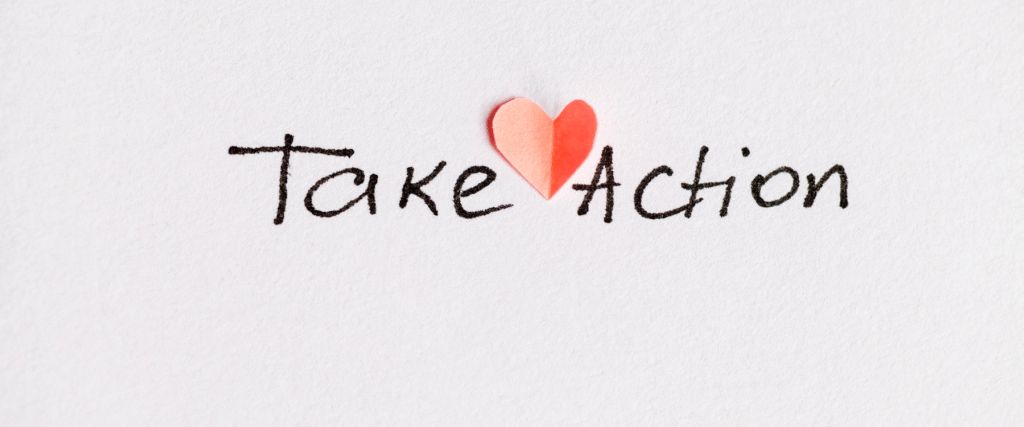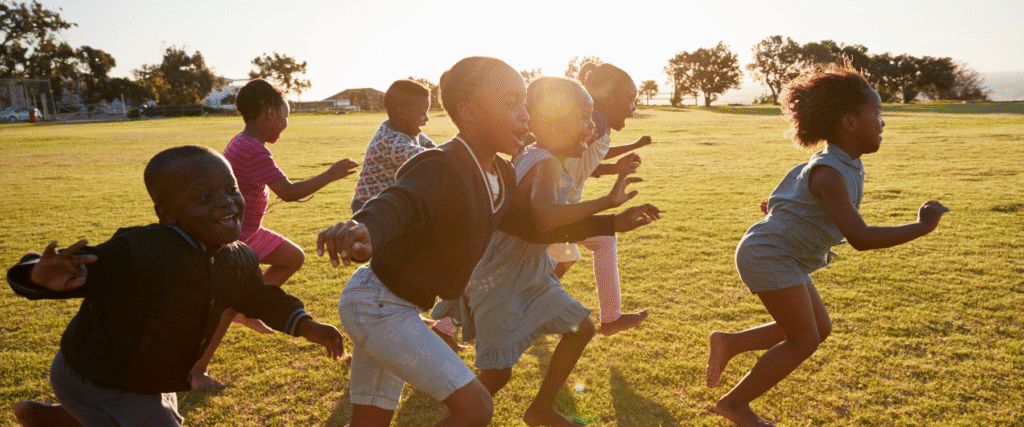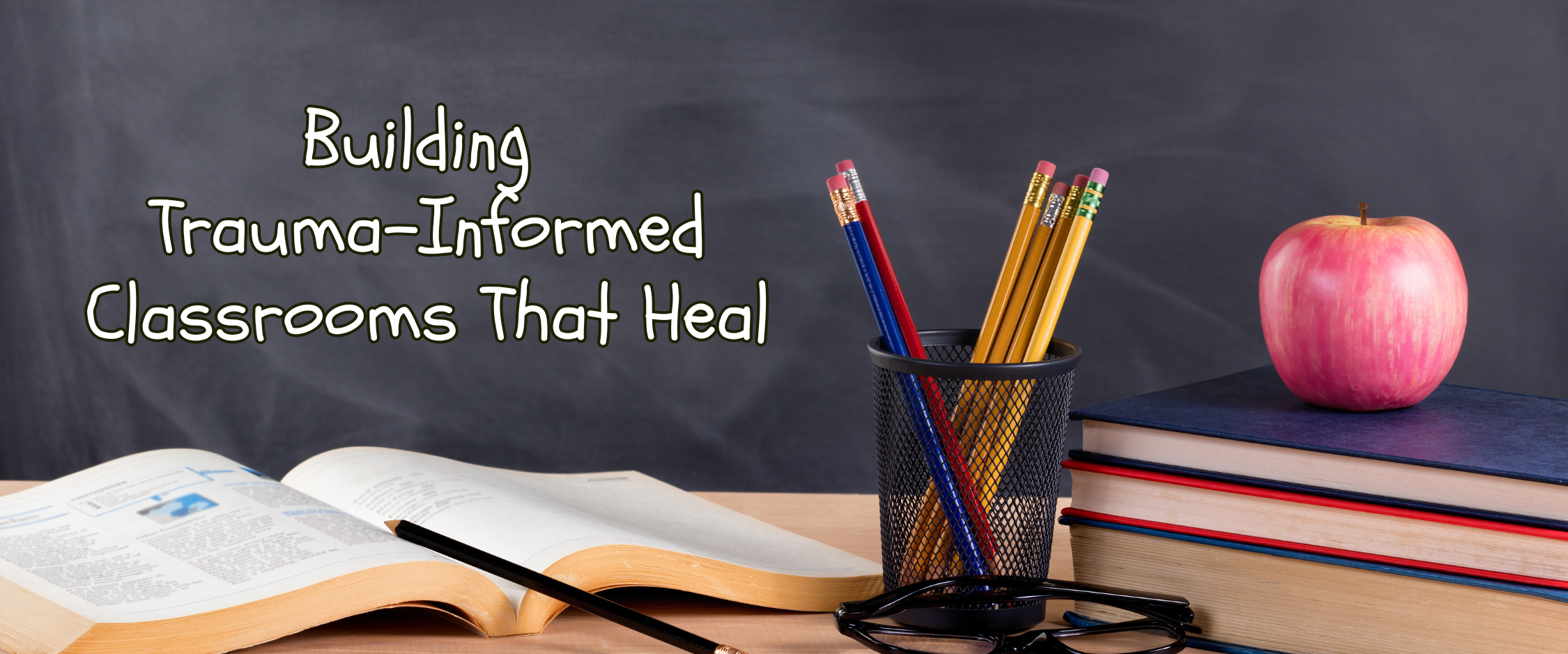
In today’s fast-paced education system, it’s easy to get swept up in test scores, behavior charts, and academic benchmarks. But beneath the surface, many children are carrying emotional wounds that can’t be measured by standardized assessments.
Mental health in children is a growing concern—and schools are often the first place where signs of distress appear. From anxiety and irritability to shutdowns and outbursts, these behaviors aren’t always about “acting out.” More often, they’re signals of an overwhelmed nervous system, rooted in past trauma or ongoing stress.
So how do we shift from a compliance-based classroom to a healing-centered space where children can learn, feel safe, and truly thrive?
Shift the Focus: From Managing Behaviors to Meeting Needs
Traditional Approach:
“Why won’t this child behave?”
“What is this child trying to communicate through their behavior?”
Why Trauma-Informed Classrooms Matter
- 1 in 3 children experience at least one Adverse Childhood Experience (ACE) by age 18.
- Trauma impacts the brain’s ability to focus, regulate emotions, and process information.
- Schools can either retraumatize—or become a source of healing.
When we recognize that all behavior is communication, we stop punishing symptoms and start addressing the root causes.

Actionable Steps to Build a Trauma-Informed Classroom
1. Start with Emotional Safety
Make every child feel seen, heard, and valued. Greet them by name, honor their identity, and create predictable routines.
Try This: Use a “feelings check-in” chart each morning so kids can express how they’re arriving in the space.
2. Reframe the Lens
Instead of labeling a student “defiant,” consider:
- Are they feeling unsafe?
- Have they experienced loss or instability?
- Do they trust adults to help regulate overwhelming emotions?
Shift your question from “What’s wrong with you?” to “What happened to you?”
3. Create Calm Corners
Set up a dedicated space where students can self-regulate—equipped with sensory tools, visual timers, soft seating, and affirmation cards.
Normalize the use of this space—not as a punishment, but as a tool for self-awareness and emotional safety.
4. Use Co-Regulation Strategies
Children struggling with self-regulation need calm, consistent adults—not more control or consequences.
Practice grounding techniques together: deep breathing, counting, or name-what-you-see exercises.
5. Ditch the Clip Chart
Behavior charts can shame and stigmatize. Instead, focus on restorative practices that build accountability, empathy, and trust.
Use circle time or peer mediation to repair relationships rather than isolate children.
6. Collaborate with Mental Health Professionals
Partner with school counselors, social workers, and therapists to design supports that address trauma’s impact on learning.
Invite mental health staff into classrooms—not just when there’s a “problem,” but as co-creators of safe learning spaces.
Healing Happens in Relationships

A trauma-informed classroom isn’t about being perfect. It’s about showing up consistently and creating a space where students feel emotionally safe enough to learn.
When we make mental health as important as math and reading, we empower children not just to succeed academically—but to heal, grow, and thrive.
Let’s Rethink the Question
Instead of asking,
“How can we get students to behave better?”
Ask:
“What do our students need to feel safe enough to learn?”
Join the Movement
What’s one thing you can shift this week to make your classroom more trauma-informed? Share below or tag us with your ideas. Together, let’s build classrooms where safety comes before standards—and healing happens every day.



